|
THE TOFAS
- SAHIN TAXI
|
 Türkçe Türkçe
|
Here I present you the Tofas-Sahin
, that is widely
used as taxi in Turkey. Tofas is the largest manufacturer of cars in
Turkey
and produces under Fiat licence. Sahin is the Turkish word for Falcon.
The car is basically a Fiat-131 with a facelift. It has a 1600 cc
engine,
recently had an adaption from the Fiat Tempra, replacing its outdated
cam-in-block
engine. This car is used widely because its parts are very cheap to
replace.
2002 was the last year that they were produced.
This model I made is 1/20 scale,
with the original Fiat
131 engine. It is completely scrap-built, with 427 parts in total . The
only parts that are used from ready-made material are the wheels ,
tires
and the steering wheel. The main material used is 0.25 mm thick sheet
tin,
and tea cans serve very good for the purpose. This model took 6 months
to build, Sep.1995-Feb.1996.
As you look at the pics, you will
have the details of
the model and also some concepts about the taxi-driver attitudes in
Turkey.
This
is the general view of
the taxi. The body is made of 0.25 mm thick sheet tin. The front grille
and headlight lenses are cut from a transparent cassette-box cover and
both the grille and the lens profiles are etched on the plastic.
The
bumpers are from balsa
block and the licence-plate characters on the doors and the roof are
computer-cut
stickers.
The
front and rear glasses
are also from cassette-box cover and are formed by shaping the material
between the jaws of a die immersed in boiling water.
Turkish
taxi drivers love
to install wider rims and tires on their cars, so this fact was
respected
while building the model. I would like to point out that there are
samples
more exaggerated than what you see on the model.
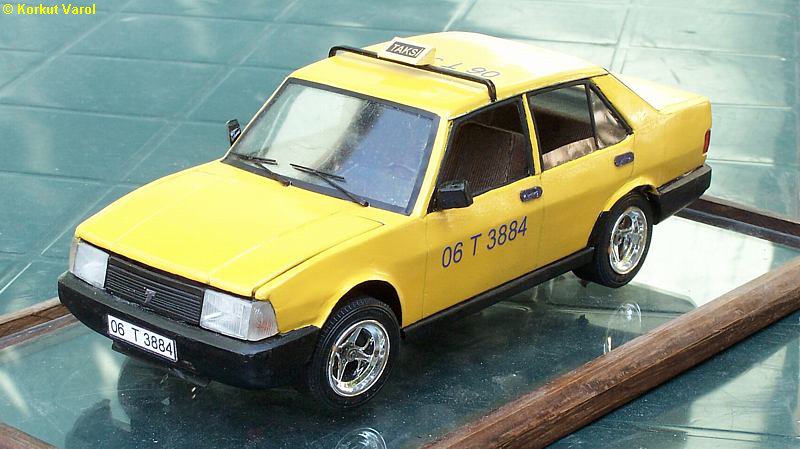
This
is the hood open view from
the right side. The hood is really of two layers: one is the outer skin
and the other is the reinforcing construction under it. The edges of
the
outer skin are bent over the reinforcement panel.
The
hinges' bottom leaves
are glued with cyanoacrylate cement, and dummy boltheads are still made
of droplets of the same cement. Although the detail is too small to be
viewed here, the battery cables are made by winding very thin copper
wires
.
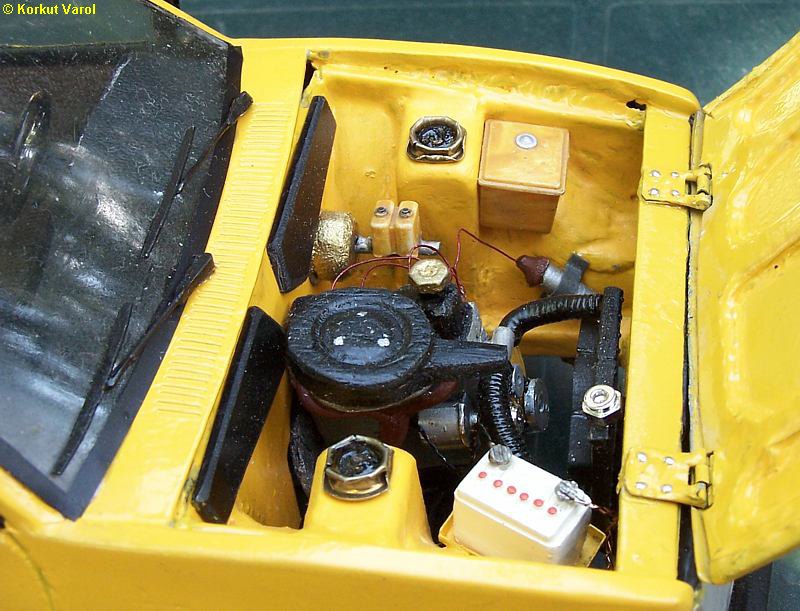
This
is the view as hood open
from the left side. The engine is carved from balsa block, as well as
the
air filter housing.
The
expansion tank, distributor
and brake fluid reservoir are of plastic; whereas the master brake
cylinder
is made from metal rod and balsa block. The radiator and hoses are of
plastic,
and though not clear on this photo, the fan and its carrying case are
made
of thin cardboard. Below you can see the engine compartment while under
construction. You may have a better view of the battery cables in these
pics.
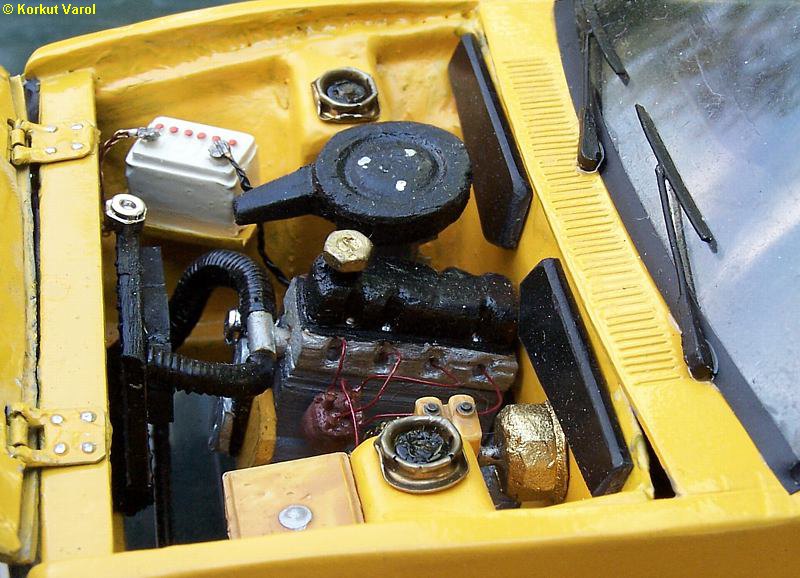
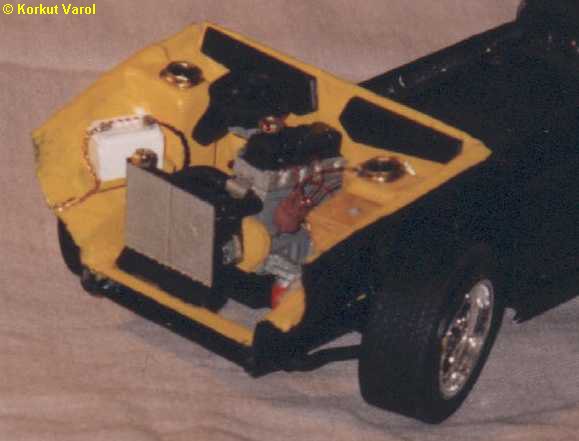
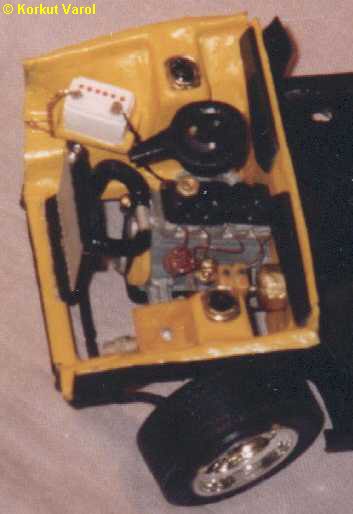
Here
you can see the engine
compartment from the top.
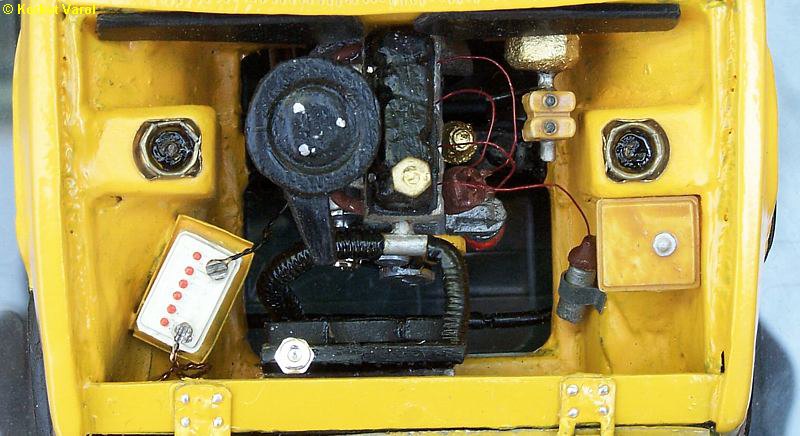
Here
you see the instrument
panel. The gauges are drawn on the computer and printed on paper. The
steering
wheel is sports-type wooden; an accessory intensively used by taxi
drivers.
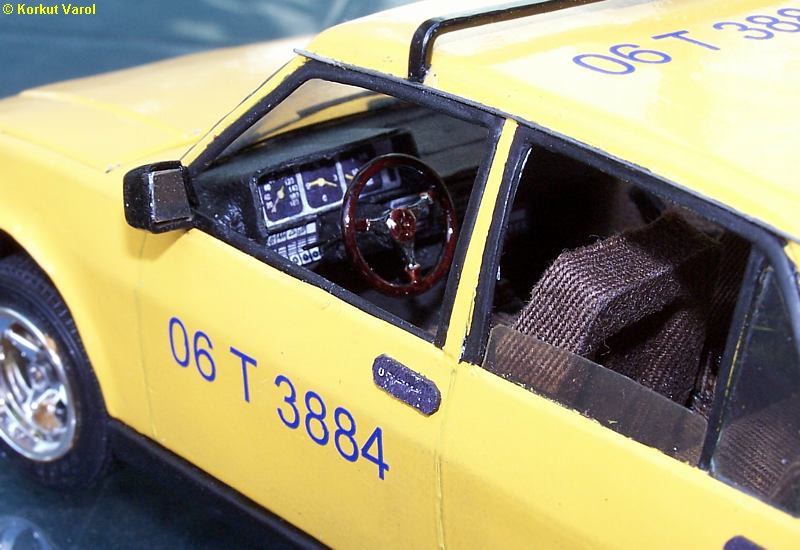
This
is the right side view
of the taxi.
Please
note the customer-left
newspaper in the backside pocket of the right front seat. The seats do
have the pockets at their backs, also cut from cloth.
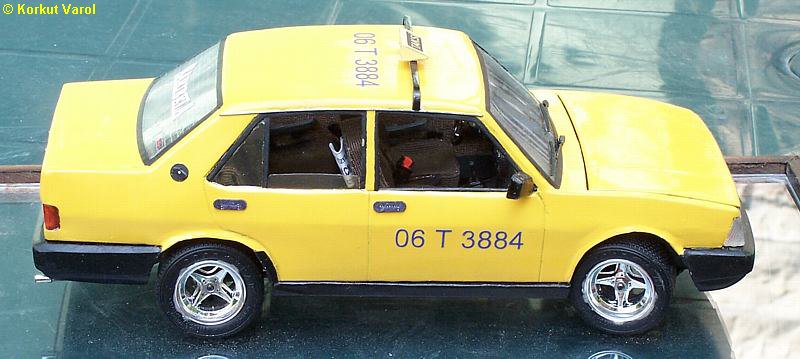
Now
we are looking from the
back side of the taxi and oh! - what is that writing on the rear window
to block out the view? .... This word "SARIBELA" means "yellow curse"
and
once again, this is an example of another absurd habit of Turkish taxi
drivers. They love to stick such things on the windows. Another very
common
fact about the windows is that, they are frequently covered with dark
sun
ray preventor films but I skipped this property since I wanted the
inside
to be seen!
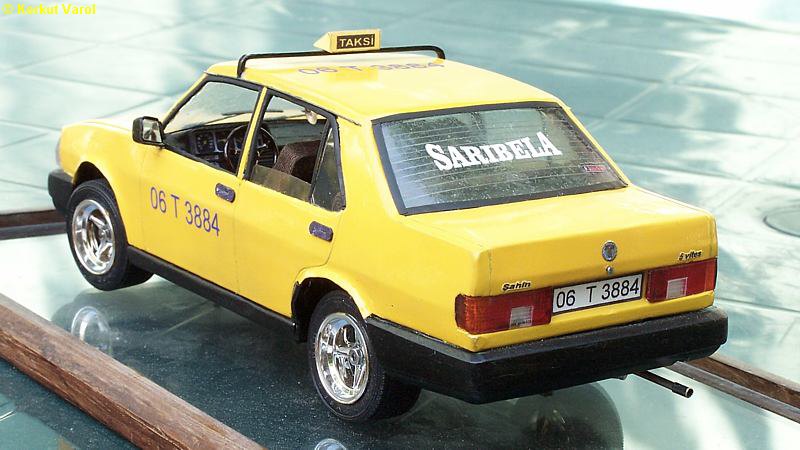
How
about a look from the bottom?
You see the panhard rod at the rear axle covered with reflective
stripes
- another typical habit of the drivers.
The
model is placed on a
transparent plexiglass base with a wood border, in order to make the
bottom
part easier to view. Those three nuts you see one at the front and two
at the rear axle serve for fixing the hooks that hold the car on the
base.
The exhaust pipe is of brass rod and the silencers are carved from
balsa
block.

The
steering and suspension
completely work. The car is suspended on helical springs that once were
the springs of ball-point pens. All the moving joints are made of steel
pins. The almost spherical head of a pin serves for the ball-joint of
the
front suspension.
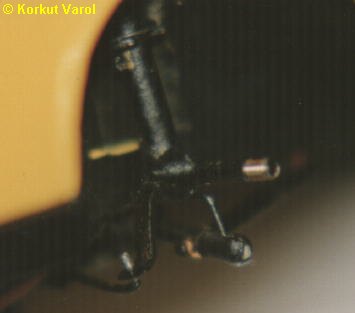
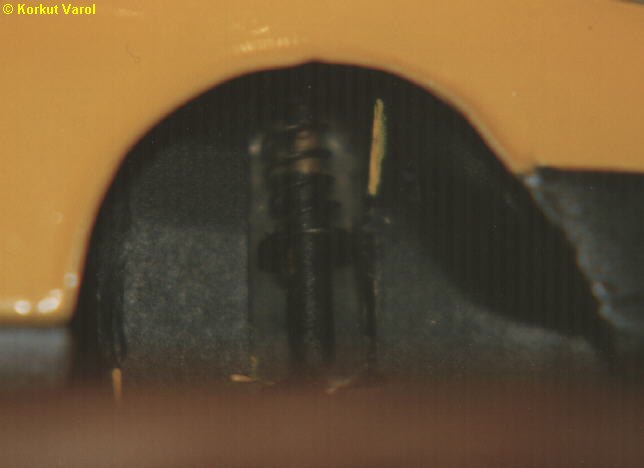
Below
are two shots taken
during construction:
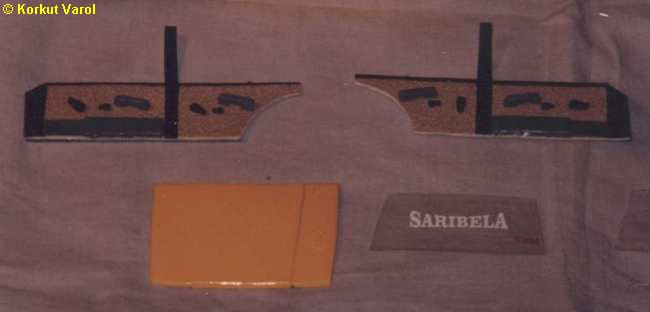
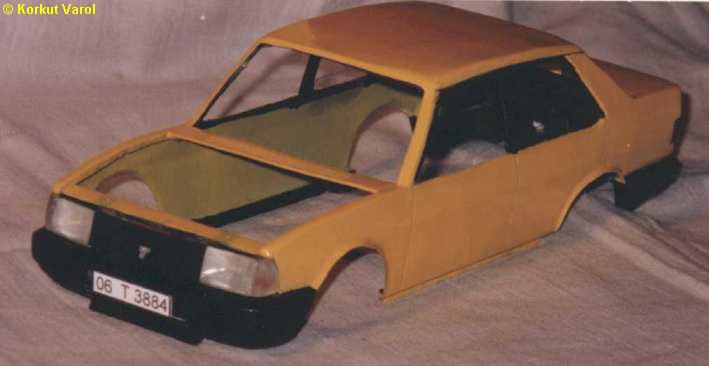
The
dashboard is made of metal
as well, and covered with artificial leather and looks like the real
thing,
because it is made of the real thing...
One
outstanding item is
the hanging CD down the rear view mirror! You may see this "accessory"
on most taxis in Turkey; for some reason I still cannot figure out...
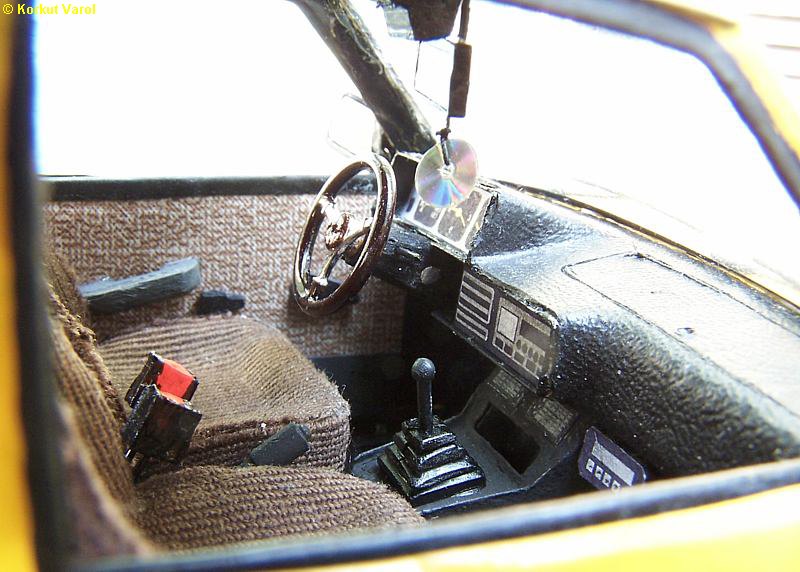
The
seat belts are prepared
on the computer and printed on paper. Another real material
at the
inside is the cloth covering of the seats which are also formed from
sheet
metal.
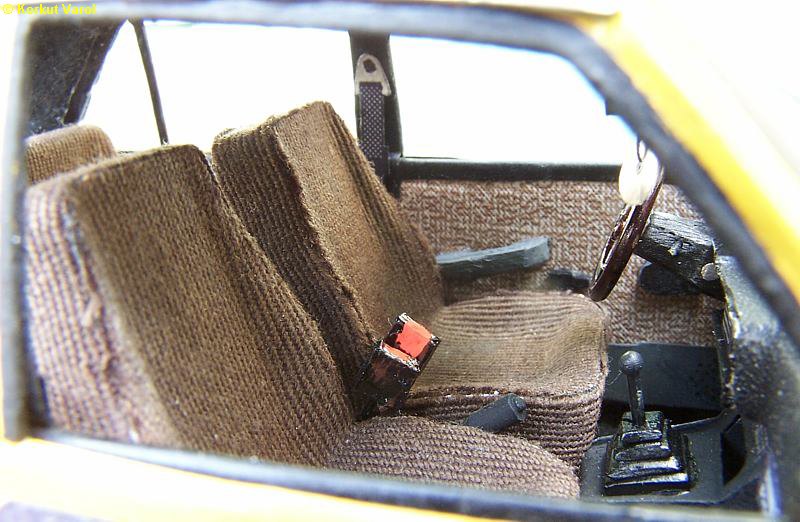
The
headlamp reflectors are
formed from tin as well. A blind hole within the signal lamp block that
has an orange paint drop serves for the colored bulb appearance.
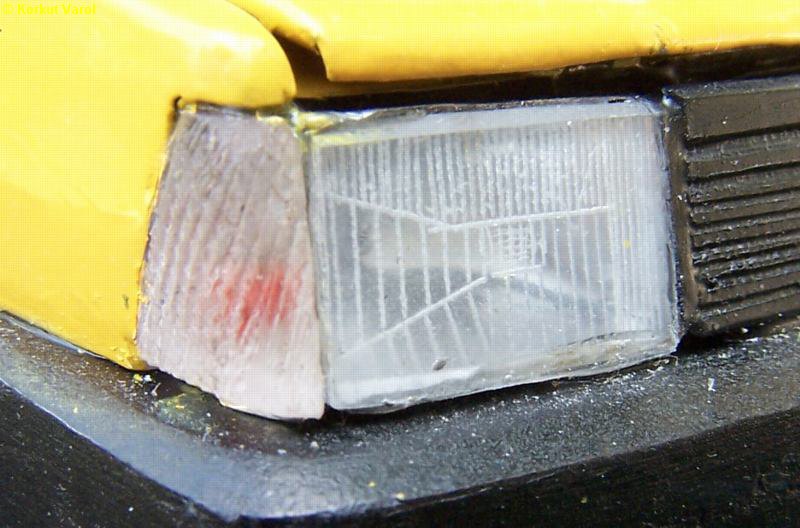
The
rear lamps are cut from
cassette box and patterns are etched with a pin tip on the inside.
Reflectors
are carved from balsa and covered with aluminium foil to duplicate the
appearance. Unfortunately, the photo does not show that detail.



















